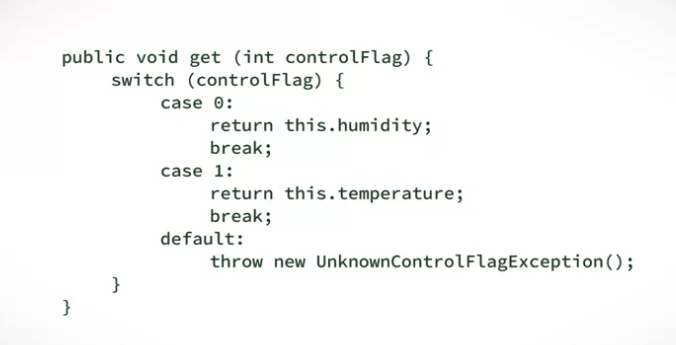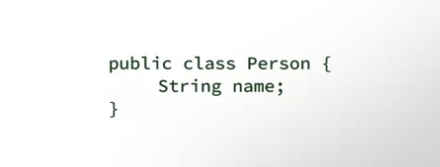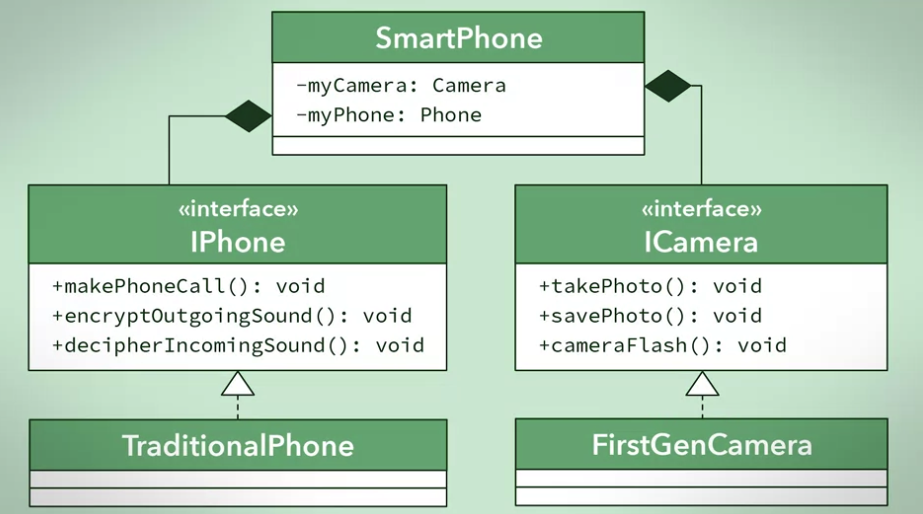Moe's Tech Blog
[OO Design Foundation] Object Oriented Modeling 2 본문
Software Design Pattern/Notes
[OO Design Foundation] Object Oriented Modeling 2
moe12825 2022. 7. 13. 12:21Design Principle
1. Coupling and Cohesion
- are the metrics used to evaluate design complexity
- Coupling focuses on complexities between a module and other modules
- Cohesion focuses on complexities within a module
- Help better apply object-oriented design principles achieve more managable system
- Think of badly designed system like a puzzle
- You can only connect specific puzzle to another puzzle
- Think of well-designed system like a lego block
- You can connect any two blocks without much trouble
- All modules are compatible with one another
- This is what you should strive to make
- Think of badly designed system like a puzzle
- A module is tightly coupled if it is highly reliant on other modules
- Like puzzles

- A module is loosely coupled if it is easy to connect to other modules
- Like lego
- This is what you should strive to make
Coupling
- when evaluating coupling of a module, the following is considered:
- 1. Degree
- Is number of connections between the module and others
- is needed to be kept small
- Example
- 1. connecting a module to other modules through a few parameters or narrow interface
- 2. Ease
- Is how obvious are the connections between module and others
- Is needed (as much as possible) to have its connections easy to make without needing to understand the implementation of other modules
- 3. Complexity
- is how interchangable other modules are for this module
- you want other modules easily replacable for something better in the future
- 1. Degree
Cohesion
- considers complexity within a module
- represents the clarity of a responsibilities of a module
- A module is
- highly cohesive if your module performs one task and nothing else, or has a clear purpose
- lowly cohesive if your module tries to encapsulate more than one purpose, or has an unclear purpose
Example
- The following has low cohesion because it has two purposes and it's unclear

- The following example is highly cohesive and loosely coupled

2. Separation of Concerns
- Is a key idea that applies throughout object oriented programming
- is an ongoing process throughout the design process
- Creates more cohesive classes using abstraction, encapsulation, decomposition and generalization
Definition
- A concern is a very general notion, basically saying it is anything that matters in providing a solution to a problem
Steps

- There is low cohesion in above class
- There are behaviors not related to each other
- The camera behaviors do not need to be encapsulated with the behaviors of the phone in order for the camera to do its job
- The above class has low modularity
- We cannot access the camera or the phone separately if we are to build another system only one or the other
- We cannot replace current camera with different camera, or replace it completely with a different object
- 1. Analyze a class's concern

- 2. Separate them out into their own more cohesive classes and encapsulate all the details about each into functionally distinct and independent classes

- 3. Redesign code

3. Information Hiding
- of information needed to use them correctly and hide everything else
- is often associated with encapsulation
- allows you to build flexible, reusable, and maintainable systems
- JAVA has four levels of acess:
- 1. Public
- Accessible by any classes (methods and variables)
- Does not allow other classes to change the implementation of the behavior for the method
- 2. Protected
- are only available to
- a. encapsulating class itself
- b. it's subclasses
- c. classes within the same package (a mean which JAVA uses to organize multiple classes into a single name space)

- are only available to
- 3. Default
- Only allows access to attributes and methods to subclasses and to the encapsulating class
- Is also called no modifier access because explicit declaration is not needed

- 4. Private
- are not accessible by any classes other than the encapsulating class itself
- cannot access attributes directly, and cannot invoke methods by other classes
- 1. Public
4. Conceptual Integrity
-
- one that will help you to create consistent and well designed software.
- has multiple ways to have it achieved:
- 1. Communication
- i.e. Daily standup meetings, sprint retrospectives (agreeing to use certain libraries, and methods)
- 2. Code Reviews
- 3. Having a well-defined design, or architecture underlying your software
- Guides how your software is organized
- 4. Unifying Concepts
- 5. Having a Small Core Groups that accepts commits to the code base
- Ensures that any software changes follow the overal architectural design of your software
- 1. Communication
- Is most important considerations in system design
Generalization Principles
1. Inheritance Issues
Good Generalization
- Is that:
- It's subclass has more functionality than the superclass.
-
It's subclasses provide and share attributes and behaviors from the same superclass, but each subclass has their own distinct functions.
Misusing inheritance
- Can lead to poort codes
- Happens when design principles are used improperly
- Is detected by the following:
- 1. Ask question "Am I simply using inheritance to simply share attributes or behaviors without further adding anything special in my subclasses?"
- If yes, you are misusing inheritance
- Here, superclass is already enough
- Example
- 1. Pizzas at a pizza shop
- Say class for each pizza is constructed (Pepperoni, Hawaiian, ...)
- And a superclass is created with sharing attributes and methods


- Note that Pepperoni Pizza is not really different from subclass
- There is no reason to use inheritance in this case
- you can use Pizza class with pepperoni as its toppings
- 2. Check if Liskov Substitution Principle is broken
- States that "subclass can replace a superclass, if and only if, the subclass does not change the functionality of a superclass"
- Example
- 1. Animal and Whale


- Whale breaks Liskov Substitution Principle because it's run and swim method overrides the animal's class's running and walking methods and replaces it with swimming behavior
- 1. Animal and Whale
- 1. Ask question "Am I simply using inheritance to simply share attributes or behaviors without further adding anything special in my subclasses?"
Using Decomposition
- If a class is misued and inheritance does not suit your need, consider decomposition
- Example
- 1. Smart phone
- is a good example where decomposition works better than inheritance
- doesn't make sense to inherit from phone

(not a good example) (a good example)
(a good example)
- 1. Smart phone
- Example
References
- Object-Oriented Design, University of Alberta: https://www.coursera.org/learn/object-oriented-design
객체 지향 설계
앨버타 대학교에서 제공합니다. This course takes Java beginners to the next level by covering object-oriented analysis and design. You will discover how to ... 무료로 등록하십시오.
www.coursera.org
- The Liskov Substitution Principle Explained, reflectoring.io: https://reflectoring.io/lsp-explained/
'Software Design Pattern > Notes' 카테고리의 다른 글
| [Design Pattern] Facade Pattern (0) | 2022.08.13 |
|---|---|
| [Design Pattern] Factory Pattern (0) | 2022.07.25 |
| [Design Pattern] Mediator Pattern (0) | 2022.07.02 |
| [디자인 페턴] 싱글톤에 관하여 (0) | 2022.04.11 |
| [디자인 페턴] 시작하며 (0) | 2022.03.20 |



